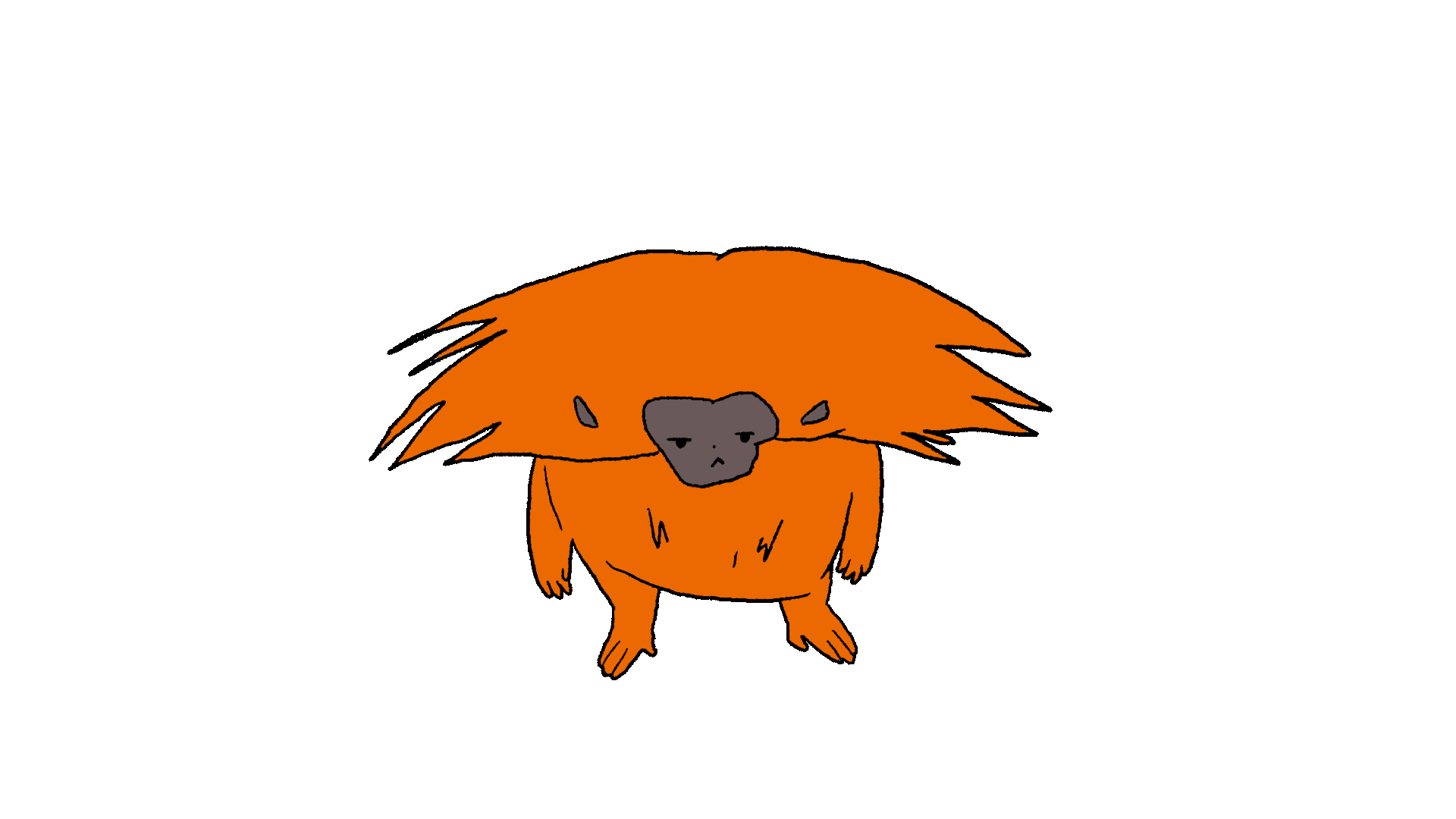The Shortest Monkey In The World: Discover The Fascinating Pygmy Marmoset
Hey there, monkey lovers! If you're here, chances are you're curious about the shortest monkey in the world. Brace yourself because we’re about to dive deep into the world of the tiniest primate on the planet—the Pygmy Marmoset. This little critter is not just adorable but also packed with some seriously cool facts that’ll blow your mind. So, buckle up and let’s explore the life, habits, and quirks of this pint-sized wonder!
Now, you might be wondering why the Pygmy Marmoset holds the title of the shortest monkey in the world. Well, it's all about proportions, my friend. This monkey, despite its size, is a powerhouse of energy and survival instincts. Imagine a creature so small it can fit in the palm of your hand, yet it’s one of the most fascinating animals in the rainforest. Stick around, and we’ll unravel the mystery behind this tiny marvel.
But wait, there’s more! The Pygmy Marmoset isn’t just about being small. It’s a bundle of intelligence, social behavior, and incredible adaptability. As we journey through this article, we’ll cover everything from its habitat to its diet, and even touch on conservation efforts to protect these little guys. So, whether you’re a wildlife enthusiast or just someone who loves quirky animals, this is the perfect read for you.
- Psychic Television Shows A Mindblowing Journey Into The Supernatural
- Unveiling The Essence Of Justin Bieber A Deeper Dive Into His World
Table of Contents
- Introduction to the Pygmy Marmoset
- Where Do They Live?
- Physical Characteristics
- What Do They Eat?
- Social Structure and Behavior
- Reproduction and Lifespan
- Conservation Efforts
- Threats to Their Survival
- Fun Facts About the Shortest Monkey
- Wrapping It Up
Introduction to the Pygmy Marmoset
Alright, let’s get down to business. The Pygmy Marmoset, scientifically known as Cebuella pygmaea, is hands down the shortest monkey in the world. These little monkeys are so tiny that they could easily pass as plush toys if you didn’t know better. But don’t let their size fool you—these guys are survivors. They’ve adapted to life in the Amazon rainforest, and trust me, they’ve got some tricks up their sleeves.
Why Are They So Small? The Pygmy Marmoset’s small size is actually a survival strategy. Being tiny allows them to move quickly through the dense foliage of the rainforest, avoiding predators with ease. Plus, they don’t need much food to survive, which is a big plus when resources are scarce. It’s like nature’s way of saying, “Sometimes, less is more.”
Meet the Star of the Show
Let’s take a closer look at what makes the Pygmy Marmoset so special. These monkeys are native to the rainforests of South America, particularly in countries like Brazil, Colombia, Ecuador, Peru, and Bolivia. They’re not just small; they’re also super cute, with big eyes, fluffy fur, and long tails that help them balance as they leap from branch to branch.
- Christian Murillo The Rising Star In Modern Football
- Siva Wife The Untold Story Behind The Woman Who Stole Our Hearts
Oh, and did I mention their tails? Those tails are longer than their actual bodies! Talk about an impressive appendage. It’s like having a built-in balancing pole. Nature really outdid itself with this one.
Where Do They Live?
Now that we know who the Pygmy Marmoset is, let’s talk about where they call home. These little monkeys thrive in the lush rainforests of South America, specifically in the Amazon Basin. Their habitat is a mix of dense trees, vines, and rivers, making it the perfect environment for their unique lifestyle.
Why the Amazon? The Amazon rainforest provides the Pygmy Marmoset with everything it needs to survive. The trees offer shelter, food, and a place to hide from predators. Plus, the warm, humid climate suits them just fine. It’s like a tropical paradise for these tiny primates.
The Perfect Home
When it comes to choosing a tree to live in, the Pygmy Marmoset is quite picky. They prefer trees with gummy sap, which is a major part of their diet. These trees also provide a safe haven for their families, as they can hollow out the trunks and create cozy nests. It’s like having a treehouse, but way cooler.
Physical Characteristics
Let’s talk about what makes the Pygmy Marmoset stand out physically. These monkeys are, well, tiny. On average, they measure about 14-16 centimeters in body length, with their tails adding another 15-20 centimeters. Now, that’s what I call petite!
What About Their Fur? The Pygmy Marmoset’s fur is soft and fluffy, ranging from golden brown to grayish-brown. Their big eyes are set wide apart, giving them a wide field of vision, which is essential for spotting predators. And those long tails? Pure gold when it comes to balance and agility.
Adaptations for Survival
- Small size for quick movement
- Sharp teeth for tree-gouging
- Long tails for balance
- Big eyes for better vision
These adaptations make the Pygmy Marmoset a true survivor in the wild. They’ve got everything they need to thrive in their natural habitat, and they do it with style.
What Do They Eat?
Now, let’s talk about the Pygmy Marmoset’s diet. These little monkeys are primarily gumivores, meaning they love munching on tree sap. But that’s not all they eat. They also enjoy insects, fruits, and small animals. It’s like a mini buffet in the rainforest.
How Do They Get Their Food? The Pygmy Marmoset uses its sharp teeth to gouge holes in tree bark, allowing the sap to flow out. They then lap it up with their tongues. It’s a pretty clever way to get a meal, don’t you think?
Feeding Habits
Feeding is a family affair for the Pygmy Marmoset. They work together to gather food, ensuring that everyone gets their share. This cooperative behavior is one of the reasons they’ve been so successful in the wild. It’s like a mini society, but with monkeys.
Social Structure and Behavior
Speaking of mini societies, let’s dive into the social structure of the Pygmy Marmoset. These monkeys live in small family groups, usually consisting of a dominant male, a female, and their offspring. It’s a tight-knit community where everyone plays a role.
What Do They Do All Day? A typical day for the Pygmy Marmoset involves foraging for food, grooming each other, and keeping an eye out for predators. They’re also quite vocal, using a variety of calls to communicate with their group. It’s like a mini soap opera in the rainforest.
Communication
Communication is key for the Pygmy Marmoset. They use a range of sounds, from high-pitched whistles to soft chirps, to stay connected. This helps them maintain group cohesion and avoid danger. It’s like having a walkie-talkie system built into their brains.
Reproduction and Lifespan
Let’s talk about the next generation of Pygmy Marmosets. These monkeys reach sexual maturity at around 1.5-2 years old. They usually give birth to twins, and the whole family helps raise the young. It’s like a community effort to ensure the survival of the species.
How Long Do They Live? In the wild, Pygmy Marmosets can live up to 11-12 years. In captivity, they can live even longer, sometimes up to 18 years. It’s a testament to their adaptability and resilience.
Parenting Like a Pro
Raising young Pygmy Marmosets is no easy task. The parents, along with the older siblings, take turns carrying the babies and teaching them important survival skills. It’s like a crash course in monkey life, and they ace it every time.
Conservation Efforts
Now, let’s talk about the challenges facing the Pygmy Marmoset. Like many rainforest animals, they’re threatened by habitat loss due to deforestation. Conservationists are working hard to protect their natural habitat and ensure their survival for future generations.
What’s Being Done? Various organizations are involved in conservation efforts, such as creating protected areas, promoting sustainable logging practices, and raising awareness about the importance of biodiversity. It’s a team effort, and every little bit helps.
How You Can Help
- Support conservation organizations
- Reduce paper usage
- Spread awareness
By taking small steps, we can all contribute to the protection of the Pygmy Marmoset and its habitat. It’s a win-win for everyone involved.
Threats to Their Survival
Unfortunately, the Pygmy Marmoset faces several threats in the wild. Aside from habitat loss, they’re also vulnerable to predation and climate change. It’s a tough world out there, and these little monkeys need all the help they can get.
What Can We Do? The best way to help is by supporting conservation efforts and reducing our carbon footprint. Every action counts, no matter how small. It’s like giving the Pygmy Marmoset a fighting chance in a rapidly changing world.
Predators and Challenges
Predators such as birds of prey and snakes pose a significant threat to the Pygmy Marmoset. Their small size makes them easy targets, which is why they rely on their agility and keen senses to stay safe. It’s a constant battle, but they’re up for the challenge.
Fun Facts About the Shortest Monkey
Before we wrap up, here are some fun facts about the Pygmy Marmoset:
- They’re the smallest monkey in the world
- They can jump up to 16 feet in a single leap
- They communicate using over 15 different sounds
- They’re known as the “pocket monkey” due to their size
Isn’t it amazing how much there is to learn about these tiny creatures? They’re truly one of nature’s most fascinating creations.
Wrapping It Up
And there you have it, folks! The shortest monkey in the world, the Pygmy Marmoset, is a true marvel of nature. From their tiny size to their incredible adaptability, these monkeys have captured the hearts of wildlife enthusiasts around the globe. Remember, every little action counts when it comes to protecting these amazing creatures and their habitat.
So, what’s next? Leave a comment below and let me know what you think. Share this article with your friends and family, and don’t forget to check out more articles on our site. Together, we can make a difference for the Pygmy Marmoset and other endangered species. Until next time, keep exploring and stay wild!



Detail Author:
- Name : Prof. Deon Beahan V
- Username : brooklyn06
- Email : schaefer.gabe@langosh.com
- Birthdate : 1988-10-12
- Address : 32933 Alia Islands Apt. 078 New Zanebury, IN 67629-7290
- Phone : +15205057637
- Company : Turner, Mayert and Kihn
- Job : Battery Repairer
- Bio : Esse est ipsam in qui similique. Et omnis est ut esse magnam qui ipsa. Aut sequi earum vitae molestiae id. Tempore voluptates est accusantium placeat distinctio accusamus.
Socials
linkedin:
- url : https://linkedin.com/in/doyle.toy
- username : doyle.toy
- bio : Eligendi mollitia et iste a veritatis sint.
- followers : 108
- following : 151
tiktok:
- url : https://tiktok.com/@doyle_toy
- username : doyle_toy
- bio : Est molestiae aut eos repudiandae illum quia est natus.
- followers : 2985
- following : 2343
instagram:
- url : https://instagram.com/dtoy
- username : dtoy
- bio : Quidem cupiditate omnis tempore enim. Est aspernatur laudantium nam magni dolor.
- followers : 1706
- following : 1574